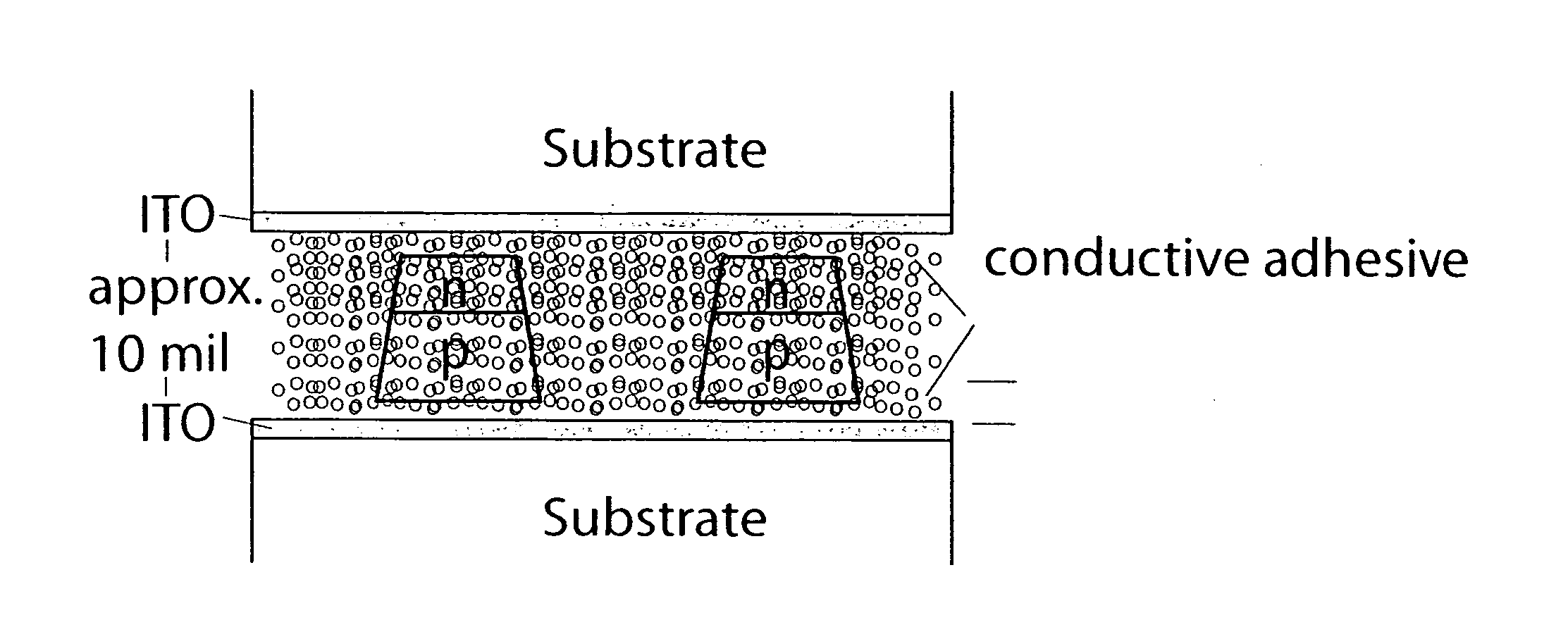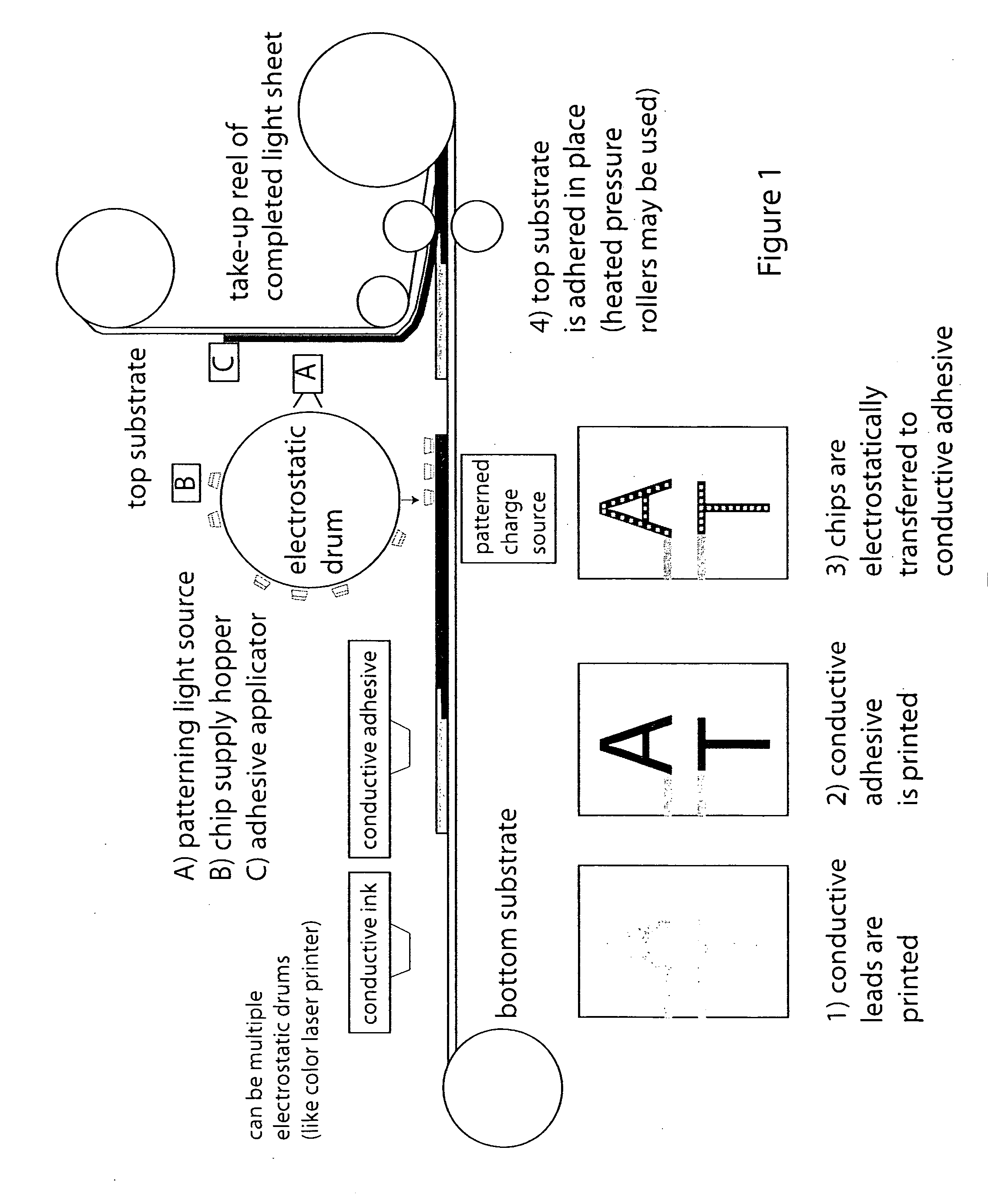Roll-to-roll fabricated encapsulated semiconductor circuit devices
a semiconductor circuit device and encapsulation technology, applied in the direction of semiconductor/solid-state device details, lighting and heating apparatus, radioation controlled devices, etc., can solve the problems of high cost of forming the lamp and then soldering the lamp to the printed circuit board, and the requirement of a high-intensity photo-radiation sour
- Summary
- Abstract
- Description
- Claims
- Application Information
AI Technical Summary
Benefits of technology
Problems solved by technology
Method used
Image
Examples
Embodiment Construction
[0247] For purposes of promoting an understanding of the principles of the invention, reference will now be made to the embodiments illustrated in the drawings and specific language will be used to describe the same. It will nevertheless be understood that no limitation of the scope of the invention is thereby intended, there being contemplated such alterations and modifications of the illustrated device, and such further applications of the principles of the invention as disclosed herein, as would normally occur to one skilled in the art to which the invention pertains.
[0248] The various elements making up each embodiment of the inventive devices and the various steps performed in the inventive methods can be interchanged in a variety of iterations, not all of which are provided as specific embodiments or examples herein. For example, function-enhancing components, such as phosphors, described in one embodiment may be employed, although not specifically described, in an alternativ...
PUM
| Property | Measurement | Unit |
|---|---|---|
| size | aaaaa | aaaaa |
| conductive | aaaaa | aaaaa |
| electrically conductive | aaaaa | aaaaa |
Abstract
Description
Claims
Application Information
 Login to View More
Login to View More - R&D
- Intellectual Property
- Life Sciences
- Materials
- Tech Scout
- Unparalleled Data Quality
- Higher Quality Content
- 60% Fewer Hallucinations
Browse by: Latest US Patents, China's latest patents, Technical Efficacy Thesaurus, Application Domain, Technology Topic, Popular Technical Reports.
© 2025 PatSnap. All rights reserved.Legal|Privacy policy|Modern Slavery Act Transparency Statement|Sitemap|About US| Contact US: help@patsnap.com



